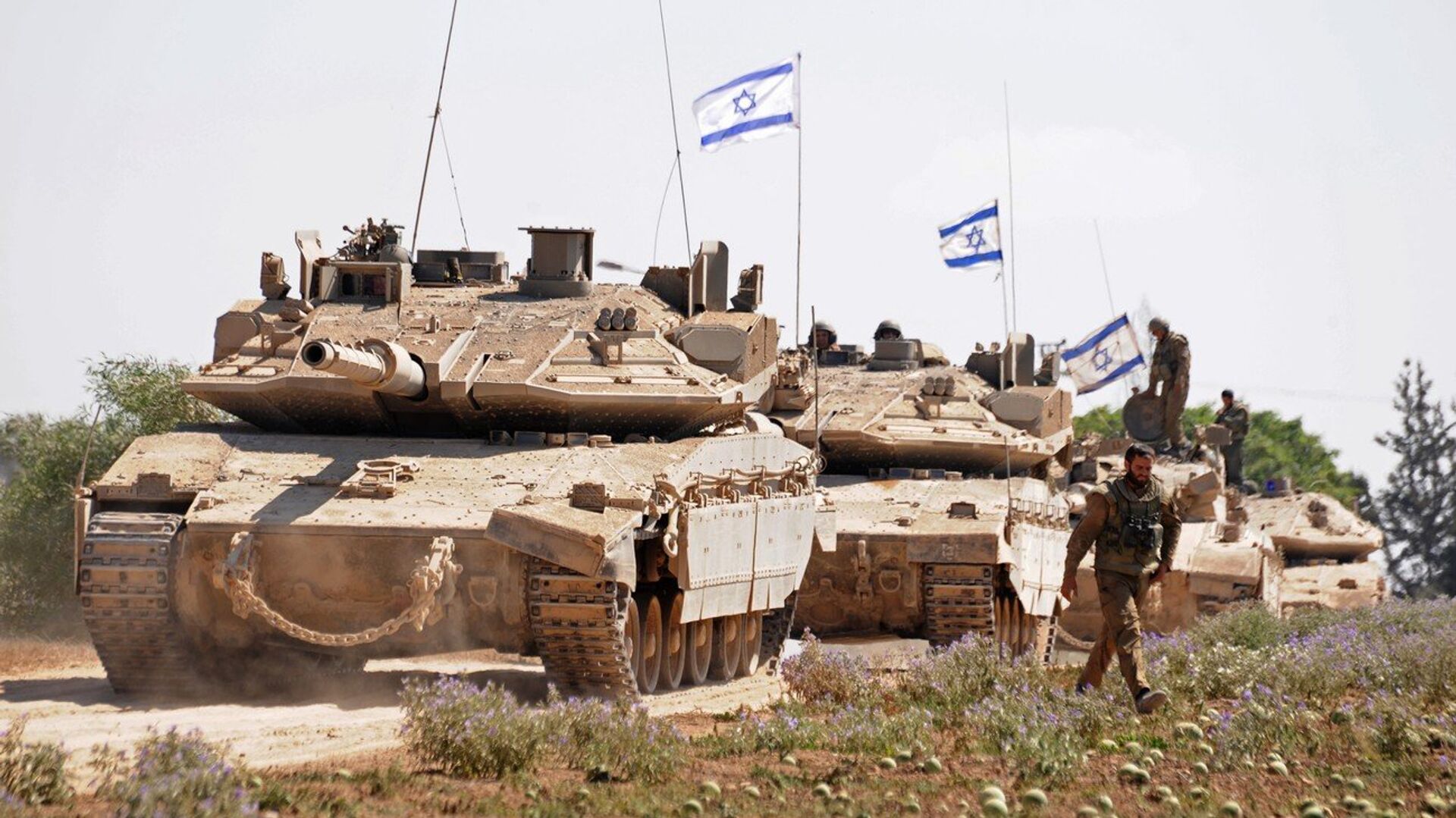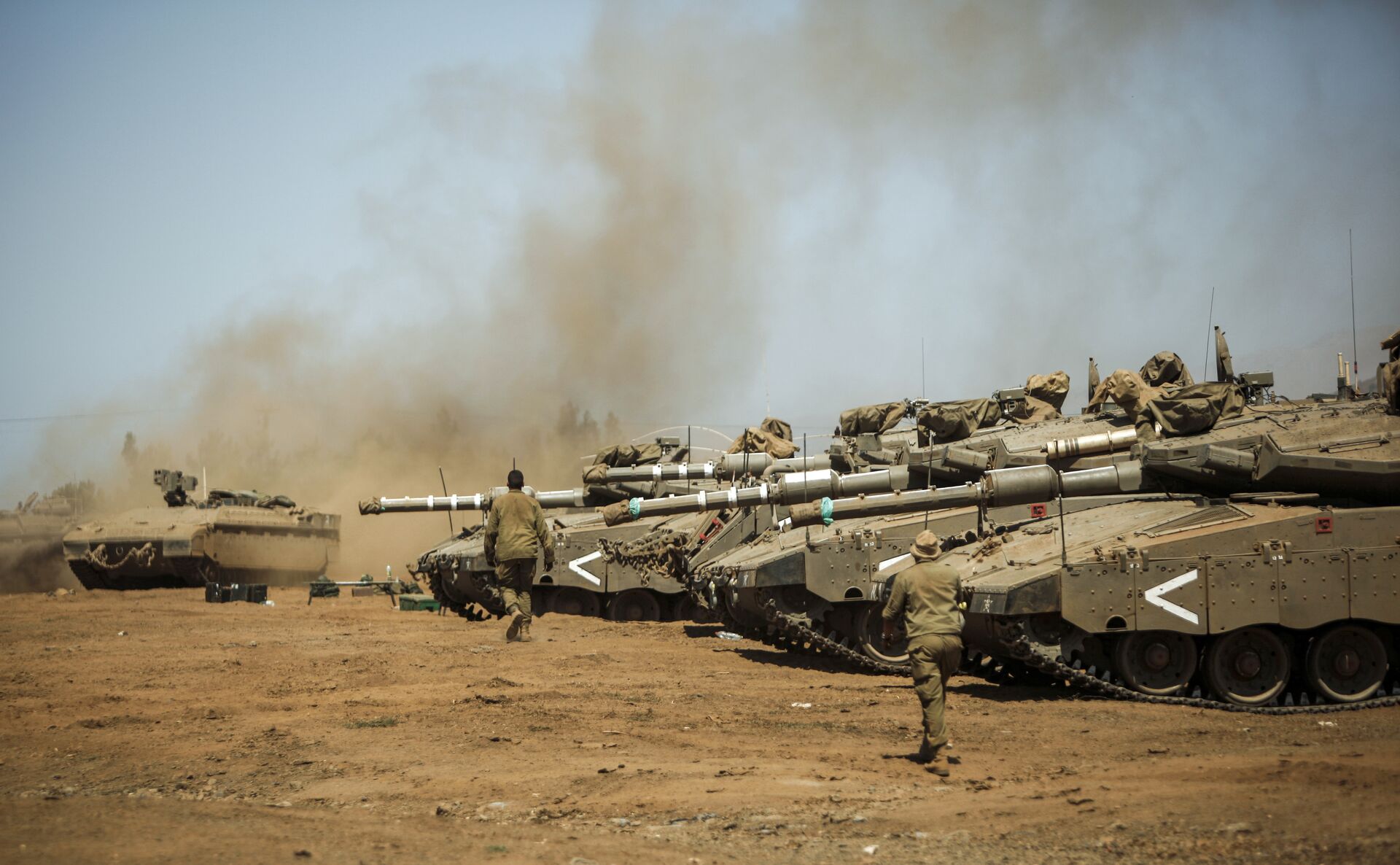What is Israel’s Merkava IV Tank That Ukraine Wanted and Hamas Destroyed?

© East News / UPI Photo / eyevine
Subscribe
The Merkava tank is intended to be used in a small, desert country. As such, Israel’s main battle tank is designed extremely well. However, those advantages don’t necessarily translate to other theaters of battle, such as the Pontic Steppe of Ukraine, where Kiev once hoped to deploy them, an expert said.
In its recent counteroffensive launched over the weekend, the Gaza-based Palestinian militant group Hamas caught Israeli forces by surprise, destroying numerous military outposts and temporarily seizing control of a territory twice the size of the Gaza Strip.
Amid the attack, the group reportdely managed to destroy some six Merkava IV (“Chariot” in Hebrew) tanks using drones. They captured another 14.
The main combat tank was recently in the news after Ukraine attempted to procure some for use against Russian forces, alongside armor obtained from NATO countries. Ultimately, Tel Aviv refused the request, as it has refused to sell or donate to Kiev any type of weaponry, including the Iron Dome air defense system.
Sputnik spoke with Sergey Suvorov, a retired Russian Army colonel and expert on tanks, to learn about the strengths of the Merkava IV that Kiev wanted to wield, and the weaknesses that made Hamas able to destroy them so easily.
“This is not the first one to burn,” he noted, pointing out that Palestinians had managed to destroy some not long after they entered service.
The Merkava IV, the latest version of the tank, was first introduced in 2003, towards the end of the Second Palestinian Intifada, a massive uprising against Israeli rule that begun in 2000. It weighs 65 tons and has a 120-millimeter main gun. Today, Israel has some 600 Merkava IVs.
“The vehicle is good. At one time, Israeli tank crews asked my opinion about this tank. I honestly told them that for a country where there are no swamps, where there are no rivers, and which one can cross using only one gas station, it is impossible to come up with a better tank,” Suvorov said.

Israeli soldiers manuever Merkava tanks and Namer armored personnel carriers (APCs) during the last day of a military exercise in the northern part of the Israeli-annexed Golan Heights on September 13, 2017.
© AFP 2023 / JALAA MAREY
“For that area, for that region, the vehicle is excellent, well protected,” Suvorov noted. “Modern fire control system - everything is as it should be for a modern tank.”
However, the expert noted that if the tank were instead being used in wide, riparian Ukraine, “in five minutes we would start pulling them out from somewhere.”
In Israel, he noted, “there is no swamp, there is no mud, there are no rivers with bridges through which this colossus weighing more than 60 tons must travel.”
While Ukraine wasn’t able to secure any Merkavas from Israel, it did manage to get armor from several other Western nations, including German Leopard tanks, British Challenger tanks, and American Abrams tanks.
Survivability is Supreme
In comparing them to the Merkava, Suvorov noted that the Israelis designed their own armor in the 1970s because of their unique priorities. At the time, Israel was engaging in regular wars with its Arab neighbors, including Lebanon, Syria, Jordan, and Egypt, which together severely outnumbered the Israeli Defense Forces (IDF).
“When they were developing the first Merkava, General Tal, the main ideologist for the development of this tank, prioritized increasing the survivability of the crew in a combat situation and the survivability of the vehicle itself,” Suvorov explained.
“They said ‘thank you’ to the British, who did not want to supply them with any more tanks, so they made their own. They [the Merkavas] have a front-mounted engine and an exit in the back, which somewhat facilitates the evacuation of the crew in the event of, say, its destruction or damage. Moreover, if it is under fire, you can jump back.”
“There's a good gun there, they modified it - it’s a German cannon, Rheinmetall’s - but with Israeli modifications, changes were made to the design in order to install it in this turret. There are a lot of different features to protect ammunition from fire, and a good fire control system,” he said.
“As the Israeli tank crews themselves told me, including those who participated in the development of this tank, they used a lot of interesting solutions specifically to increase survivability. That is, if something somewhere could explode, then the design was made in such a way that the explosion was directed somewhere, but not towards the crew, for example,” Suvorov told Sputnik.
“Ammunition is stored in separate special containers made of fiberglass or some kind of plastic. I don’t know exactly what material, but they are closed - that is, even if there is some kind of open flame getting inside, then due to the fact that they are closed, they will not ignite.”
“Nonetheless, if a cumulative jet from a grenade launcher, ATGM [anti-tank guided missile] or the core of an armor-piercing projectile flies into this box, it still won’t save you. But in any case, this increases the security of the machine. They have two or three shells there, they are in special plastic containers inside the vehicle. True, this somewhat reduces the combat rate of fire, but for those conditions in which the Israel Defense Forces are fighting various wars, this is quite acceptable,” he explained.
When it comes to disadvantages, Suvorov noted that “the mass is large,” but added that “for the area where it is used, this is not the biggest disadvantage.”


